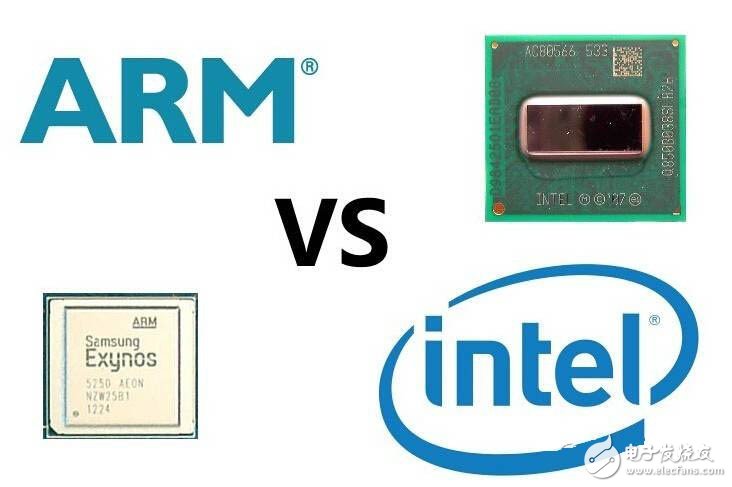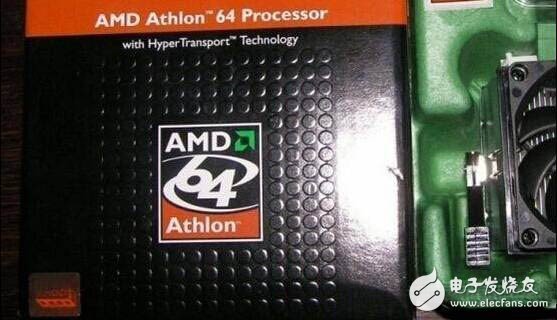Just grab a person and ask him if he knows the CPU. I think his answer will definitely be yes, but if you ask him to know the ARM and X86 architecture? What is the difference between the two? The vast majority of people are definitely awesome. Today, Xiaobian will take you deeper into the two major architectures of the CPU: ARM and X86. After going out to install X, it depends on it!

What is the ghost of the CPU under revisit
The central processing unit (CPU) is mainly composed of three parts: the operator, the controller and the register. From the literal point of view, the operator acts as the operation. The controller is responsible for issuing the information required by each instruction of the CPU. The register is the save operation. Or some temporary files of instructions, this can guarantee a higher speed.
The CPU has four functions of processing instructions, executing operations, controlling time, and processing data. To put it in a metaphor, the CPU is like our brain, helping us to perform a variety of physiological activities. So if there is no CPU, then the computer is a pile of waste and can't work. Mobile devices are complex, and these CPUs need to perform millions of instructions to get it to work in the direction we expect, and CPU speed and power efficiency are critical. Speed ​​affects the user experience, and efficiency affects battery life. The most perfect mobile device is a combination of high performance and low power consumption.
To understand X86 and ARM, you must first understand the Complex Instruction Set (CISC) and the Reduced Instruction Set (RISC).
From the invention of the CPU to the present, there are a lot of architectures, from the familiar X86, ARM, to the less familiar MIPS, IA64, the gap between them is very large. But if they are classified from the most basic logical point of view, they can be divided into two categories, the so-called "complex instruction set" and "reduced instruction set" systems, which are often seen as "CISC" and "RISC". . The first difference between Intel and ARM processors is that the former uses the Complex Instruction Set (CISC) and the latter uses the Reduced Instruction Set (RISC). The biggest difference between the various architectures in these two categories is the way in which their designers consider the problem.
We can continue to give an example. For example, if we want to order a person to eat, then what should we order? We can give him a "eat" order directly, or you can order him to "take a spoon first, then pick up a spoonful of rice, then open your mouth, then send it to your mouth, and finally swallow it." From here, we can see that different people have different understandings of ordering others to do things. Some people think that if I first give enough training to the person who accepts the order, let him master various complicated skills (ie in hardware). In the implementation of the corresponding complex functions, then you can use a very simple command to let him do very complicated things in the future - for example, just say "eat", he will eat. But some people think that this will make things too complicated. After all, the people who accept the order are very complicated. If you want him to eat at this time, what should I do? Do you continue to train him to eat vegetables? Why can't we divide things into many very basic steps, so that those who only need to accept the command know very little basic skills, they can do the same work, nothing more than the person who issued the order is a little tired - for example, now I want When he eats vegetables, he only needs to change the "small spoonful of rice" in the order of the meal to "set a spoonful of dishes". The problem is solved, how simple. This is the logical difference between a "complex instruction set" and a "reduced instruction set."
Comparing ARM and X86 architecture from several aspects
In addition to the differences between the most essential complex instruction set (CISC) and the reduced instruction set (RISC), Intel and ARM processors compare the ARM and X86 architectures in the following aspects.
First, the manufacturing process
One big difference between ARM and Intel processors is that ARM has always designed low-power processors. Intel's strength is to design ultra-high-performance desktop and server processors.
Intel has always been the boss of the desktop server industry. However, when entering the mobile industry, Intel still uses the same complex instruction set architecture as the desktop, trying to push it into the smaller processors used by mobile devices. But the average heating rate of the Intel i7 processor is 45 watts. ARM's system-on-chip (including graphics processors) has a maximum on-time peak of about 3 watts, about 1/15 of the Intel i7 processor. Its latest Atom family of processors uses a temperature control design similar to that of an ARM processor, so Intel must use the latest 22nm manufacturing process. In general, the smaller the number of nanometers in the manufacturing process, the higher the efficiency of energy use. The ARM processor uses a lower manufacturing process with similar temperature control. For example, the Qualcomm Xiaolong 805 processor uses a 28-nanometer manufacturing process.

For the Oil Immersed Aouto Transformer, we can produce voltage of 220kV, 330kV and 500kV and capacity upto 460MVA. We use the best quality of raw material and advance design software to provide low noise, low losses, low partial discharge and high short-circuit impedance for Power Transformer.
Our power transformer are widely used in national grid, city grid, rural grid, power plant, industrial and mining enterprise, and petrochemical industry.
Power Plant Transformer,Auto Power Transformer,Auto Transformer,High Quality Auto Power Transformer
Hangzhou Qiantang River Electric Group Co., Ltd.(QRE) , https://www.qretransformer.com